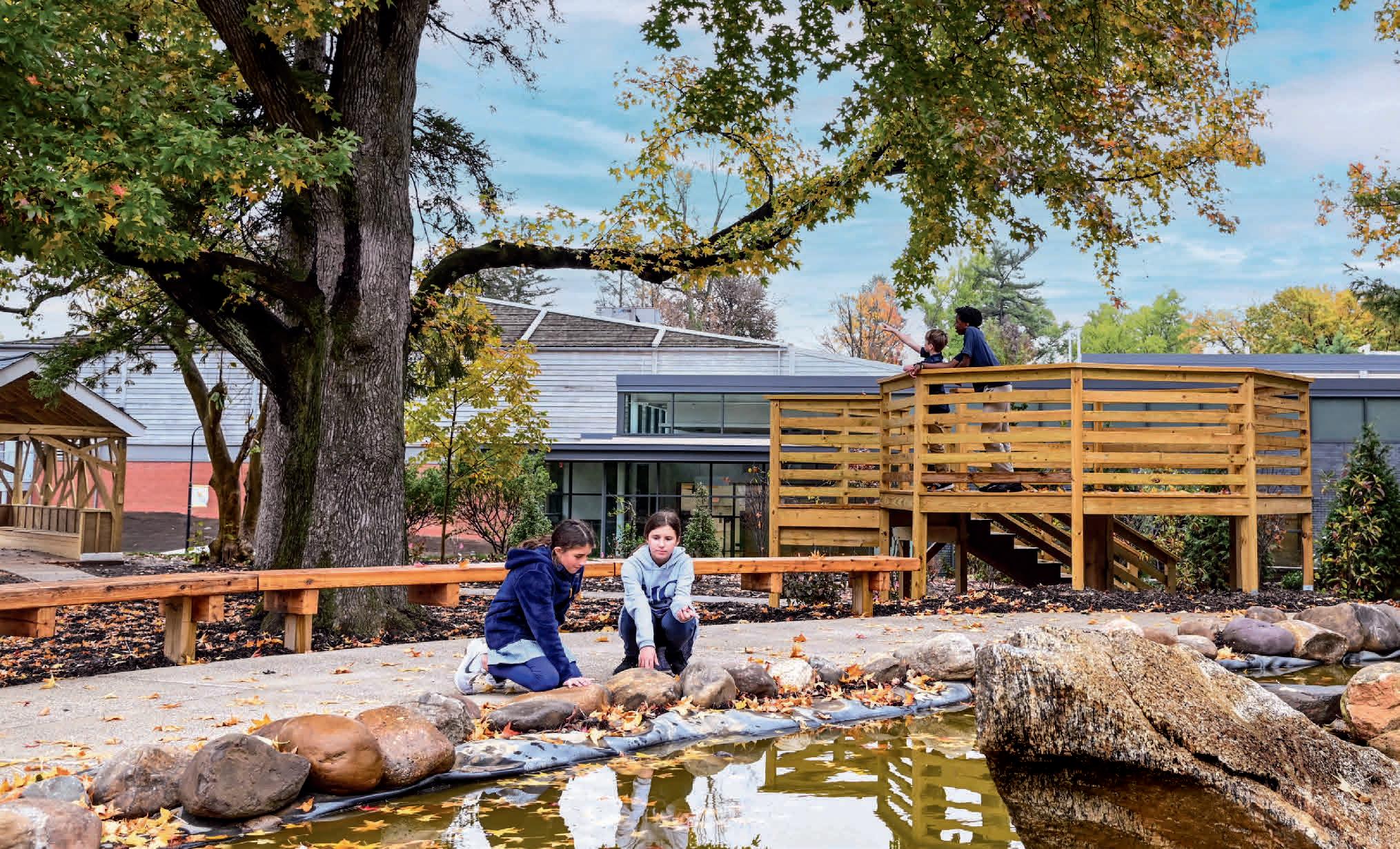
1 minute read
Nurturing Curiosity in the NEST
Nurturing a Curiosity for Nature in the NEST
The creation of the Nature, Exploration, and Science Territory (NEST) was born out of a vision for expanding outdoor education opportunities, especially those that are experiential and connect our children with nature. Now, the NEST is beginning to serve our students while also marking the conclusion of the Campus Expansion project, a three-year-long endeavor that greatly expanded the Holy Child School at Rosemont campus and facilities at 1344 Montgomery Avenue.
Advertisement
New additions to the NEST include an entrance pavilion and elevated observation deck, both of which are ideal locations for gathering students and teaching lessons outdoors. Nearly 300 native plants were added to the NEST during the fall planting season, and, this spring, the mature plants will attract pollinators and insects, ultimately creating a one-of-a-kind observatory where students will be immersed in nature. The NEST is able to serve a variety of subjects and teachers, although our science teachers across all divisions are some of the most excited faculty members. This fall, Craig Berman, our Middle School science teacher, led the initiative to hang bird feeders around the NEST as part of a larger program called Project FeederWatch. Operated by the Cornell Lab of Ornithology and Birds Canada, Project FeederWatch engages students and hobbyists in surveying birds that visit their local areas. Our students will collect data on the number and types of birds that visit the feeders around the NEST, ultimately contributing to a continental data set with their findings.
During our upcoming spring term, we look forward to the NEST being abuzz with students, as it becomes our school’s premier outdoor education space with mature and thriving plants, insects, and a pond.
Middle School students check out the features of the NEST, including our pond and the elevated observation deck.

